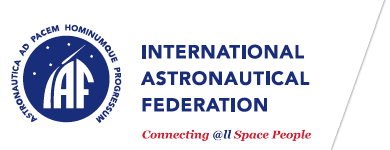Technical programme
IAC-26 — 77th International Astronautical Congress
C1. IAF ASTRODYNAMICS SYMPOSIUM
This symposium addresses advances in orbital mechanics, attitude dynamics, guidance, navigation and control of space systems.
- Coordinator
Elena Fantino
Khalifa University of Science and Technology (KUST) — United Arab EmiratesVincent Martinot
Thales Alenia Space France — France
C1.1. Attitude Dynamics (1)
This theme discusses advances in spacecraft attitude dynamics and control, as well as design, testing and performance of novel attitude sensors and actuators. This theme also covers dynamics and control of multiple interconnected rigid and flexible bodies, including tethered systems, and in-orbit assembly.
- Co-Chair
Marcello Romano
Technical University of Munich (TUM) — GermanyBin Meng
Beijing Institute of Control Engineering, Beijing, 100080, P.R. China — China
- Rapporteur
Mikhail Ovchinnikov
Keldysh Institute of Applied Mathematics, RAS — Russian Federation
C1.2. Attitude Dynamics (2)
This theme discusses advances in spacecraft attitude dynamics and control, as well as design, testing and performance of novel attitude sensors and actuators. This theme also covers dynamics and control of multiple interconnected rigid and flexible bodies, including tethered systems, and in-orbit assembly.
- Co-Chair
Jinglang Feng
— ChinaBang Hyochoong
Korea Advanced Institute of Science and Technology (KAIST) — Korea, Republic of
- Rapporteur
Anna Guerman
Centre for Mechanical and Aerospace Science and Technologies (C-MAST) — Portugal
C1.3. Guidance, Navigation and Control (1)
The emphasis of this theme is on the studies and application related to the guidance, navigation and control of Earth-orbiting and interplanetary spacecraft, including formation flying, rendezvous and docking.
- Co-Chair
Shinichiro Sakai
ISAS/JAXA — JapanSteve Ulrich
Carleton University — Canada
- Rapporteur
Guo Linli
Institute of Manned Space System Engineering,China Academy of Space Technology (CAST) — China
C1.4. Guidance, Navigation and Control (2)
The emphasis of this theme is on the studies and application related to the guidance, navigation and control of Earth-orbiting and interplanetary spacecraft, including formation flying, rendezvous and docking.
- Co-Chair
Mai Bando
Kyushu University — JapanHanspeter Schaub
Colorado Center for Astrodynamics Research, University of Colorado — United States
- Rapporteur
Krishna Dev Kumar
Toronto Metropolitan University — Canada
C1.5. Guidance, Navigation & Control (3)
The emphasis of this theme is on the studies and application related to the guidance, navigation and control of Earth-orbiting and interplanetary spacecraft, including formation flying, rendezvous and docking.
- Co-Chair
Puneet Singla
Pennsylvania State University — United StatesBernard Lübke-Ossenbeck
OHB System AG-Bremen — Germany
- Rapporteur
Chen-Huan Pi
Taiwan Space Agency (TASA) — Taipei
C1.6. Mission Design, Operations & Optimization (1)
The theme covers design, operations and optimization of Earth-orbiting and interplanetary missions, with emphasis on studies and experiences related to current and future missions.
- Co-Chair
Erick Lansard
Satellite Research Center, Nanyang Technological University (NTU) — Singapore, Republic ofPaolo Teofilatto
Sapienza University of Rome — Italy
- Rapporteur
Michèle Lavagna
Politecnico di Milano — Italy
C1.7. Mission Design, Operations & Optimization (2)
The theme covers design, operations and optimization of Earth-orbiting and interplanetary missions, with emphasis on studies and experiences related to current and future missions.
- Co-Chair
Diane Davis
National Aeronautics and Space Administration (NASA), Johnson Space Center — United StatesRichard Epenoy
Centre National d'Etudes Spatiales (CNES) — France
- Rapporteur
Stéphanie Lizy Destrez
SUPAERO- Ecole Nationale Supérieure de l'Aéronautique et de l'Espace — France
C1.8. Orbital Dynamics (1)
This theme discusses advances in the knowledge of natural motions of objects in orbit around the Earth, planets, minor bodies, Lagrangian points and more generally natural orbital dynamics of spacecraft in the Solar System. It also covers advances in orbit determination.
- Co-Chair
Othon Winter
UNESP - São Paulo Sate University — BrazilKathleen Howell
Purdue University — United States
- Rapporteur
Yoshitsugu Hitachi
ispace, inc. — Japan
C1.9. Orbital Dynamics (2)
This theme discusses advances in the knowledge of natural motions of objects in orbit around the Earth, planets, minor bodies, Lagrangian points and more generally natural orbital dynamics of spacecraft in the Solar System. It also covers advances in orbit determination.
- Co-Chair
Roberto Armellin
The University of Auckland — New ZealandJosep J. Masdemont
Universitat Politecnica de Catalunya (UPC) — Spain
- Rapporteur
Danil Ivanov
Keldysh Institute of Applied Mathematics, RAS — Russian Federation
C1.IP. Interactive Presentations - IAF ASTRODYNAMICS SYMPOSIUM
This session offers a unique opportunity to deliver your key messages in an interactive presentation on any of the subjects of Astrodynamics addressed in the classic Sessions. The presentation will be displayed on a digital screen in a dedicated location and available for view by all Congress attendees for the entire Congress week. In addition, one afternoon is dedicated exclusively for the attendees to view the Interactive Presentations, and the author will be assigned a specific ten minute slot to personally present the topic and interact with the attendees present. The Interactive Presentation may take advantage of all electronic display capabilities, such as: PowerPoint charts, embedded hot links, pictures, audio and video clips etc. An award will also be presented to the author of the best Interactive Presentation in the C Category at a special ceremony. An Abstract that follows the standard format must be submitted by the deadline for standard IAC abstracts.
- Co-Chair
Vladimir Razoumny
RUDN University — Russian FederationManoranjan Sinha
Indian Institute of Technology Kharagpur — IndiaFeng Jinglang
University of Strathclyde — United Kingdom
